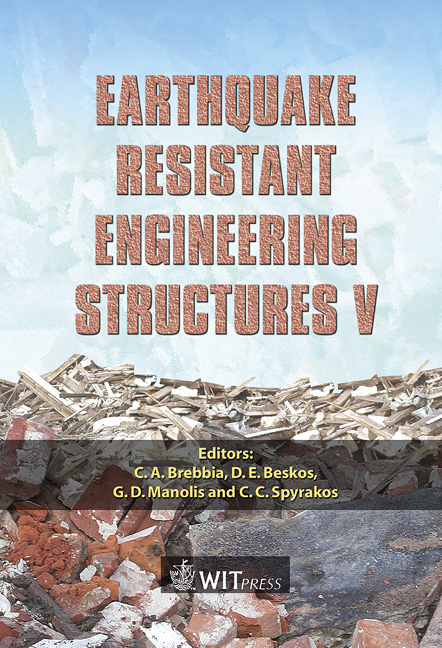A Generalized Translational-Rotational Tuned Mass Damper (T-R TMD) System For Passive Control Of Vibrations In Structures
Price
Free (open access)
Transaction
Volume
81
Pages
14
Published
2005
Size
492 kb
Paper DOI
10.2495/ERES050611
Copyright
WIT Press
Author(s)
E. A. Mashaly, M. H. El-katt, A. I. M. AL-Janabi & I. M. Abubakar
Abstract
This paper proposes and studies a generalized tuned mass damper that uses a translational spring damper attached to a rotational spring damper as a means for passive energy dissipation. To obtain the optimum design parameters of T-R TMD attached to an SDOF structure, two methods are used. In the first method, the Den Hartog model is used where the optimum design parameters are defined as those parameters that minimize the maximum displacement of the main structure when subjected to harmonic excitation. In the second method, the Sadek model is used where the optimum design parameters are defined as the parameters that would result in equal and large modal damping in the first two modes of vibration without considering the type of excitation. Numerical computer procedures are developed to obtain the optimum design parameters for the both methods. Comparative studies are made to see the effect of the various T-R TMD properties on the optimum damping ratio and the optimum frequency ratio. Simplified design equations for the optimum parameters of the T-R TMD system are also suggested for each method. Finally, SDOF and MDOF framed structures are selected to investigate the effectiveness of the proposed T-R TMD system in reducing structural response when subjected to different earthquake loadings. Keywords: earthquake vibrations, energy dissipation, passive control, tuned mass dampers, seismic design.
Keywords
earthquake vibrations, energy dissipation, passive control, tuned mass dampers, seismic design.





